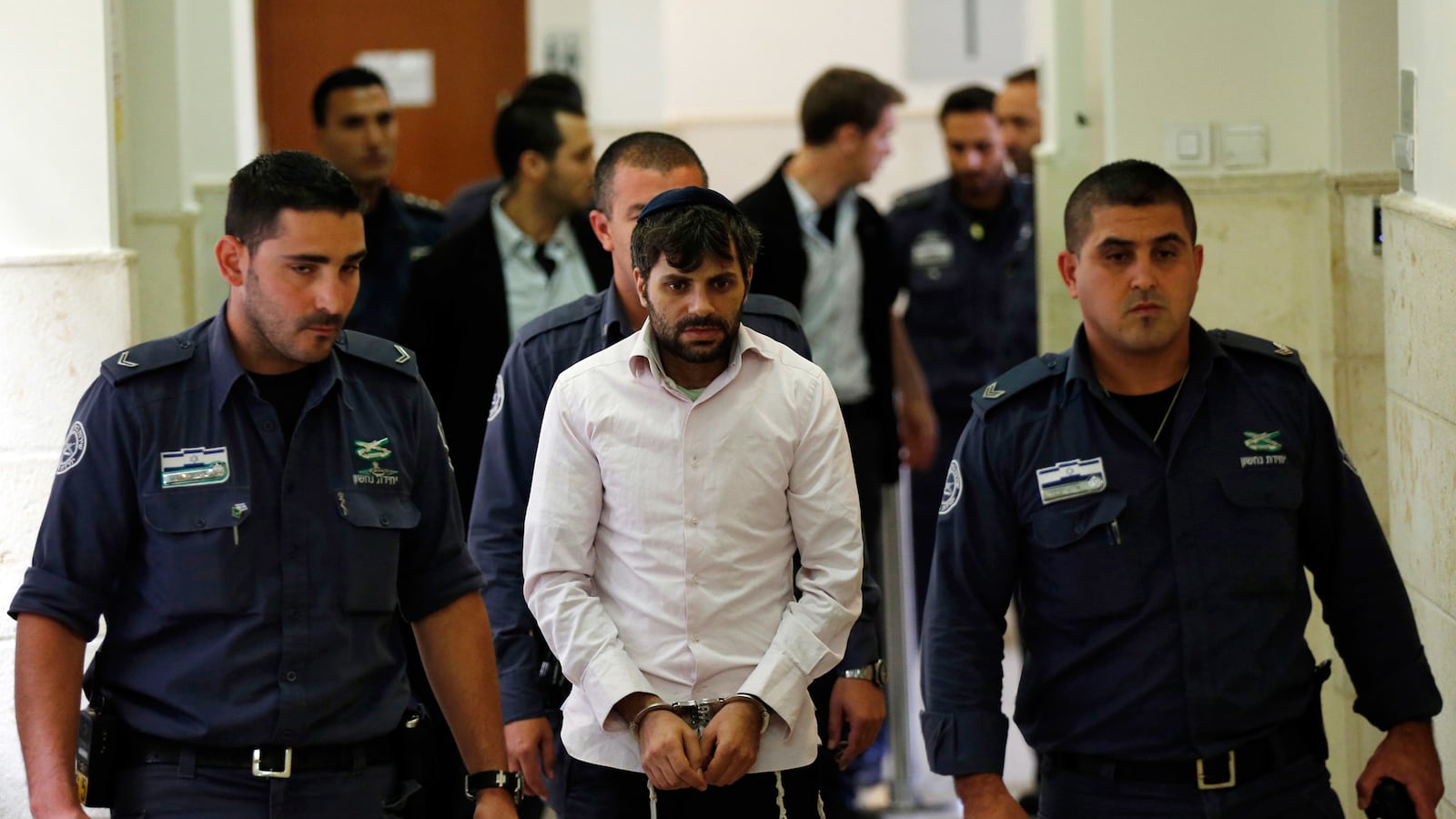Hamas funded the man who allegedly led the kidnapping ring that abducted three Israeli teens—and helped spark the latest Gaza war, in the process. But the accused kidnapper didn’t receive specific instructions from the militant group’s leadership in Gaza, an Israeli intelligence official tells The Daily Beast.
Three weeks ago, Israel’s internal security service arrested Hossam Qawasmeh, a man they are now claiming was the leader of the crew responsible for the kidnap and murder of Naftali Fraenkel, Eyal Yifrach, and Gilad Shaar.
However, the Shin Bet did not announce the arrest until Tuesday, only a few hours after Israel and Hamas agreed to a 72-hour ceasefire.
The news of the arrest and confession from Qawasmeh comes after some Western media outlets called into question whether the kidnappers in June were acting on behalf of Hamas leaders. Buzzfeed last week reported that some Israeli intelligence officers said the kidnappers—identified by Israel in June as Amer abu Aysha and Marwan Qawasmeh—were acting on their own.
Getting to the bottom of the kidnappings and murder is important to understanding the current war in Gaza that appears to be winding down this week. The kidnappings—for which Hamas leaders denied responsibility but nonetheless praised in public statements—sparked an Israeli campaign in the West Bank to disrupt the Hamas network there. In response, Hamas started firing rockets from Gaza into Israel. And then, Israeli forces began their bombing.
Israeli news reports say Qawasmeh acknowledged during interrogations that he received money and direction from Hamas leaders in Gaza to conduct the June 15 kidnapping. He was arrested trying to flee to Jordan using phony identification.
Shaul Bartal, an expert on Hamas and a reservist major in the Israel Defense Force for military intelligence, told The Daily Beast on Tuesday that the arrest of Qawasmeh was a smoking gun, but he also said it’s doubtful that Hamas leaders gave specific instructions to kidnap the three teenagers.
“It seems Hamas leadership in Gaza gave an order, but the order was more general,” he said.
Bartal just returned from 38 days of fighting near Gaza. He declined to say exactly what he was doing in the current war.
But he said that the Qawasmeh clan has had a long history of working closely with Hamas leadership. “They have received payments in the past from Hamas leaders in Gaza,” he said.
“There were always financial connections between the Qawasmeh families and Hamas,” he added. “I discovered a few years ago, people get money from Hamas leadership in Gaza to pay for children who died as martyrs. They always get money, we don’t always know how and why, but we know that they do.”
Shlomi Eldar, an Israeli journalist working for al-Monitor, wrote last month that members of the Qawasmeh family at times have conducted rogue attacks against the wishes of Hamas leaders. For example, in 2003, the Qawasmeh clan was responsible for a suicide bomb attack on the Number 2 bus in Jerusalem after there was a ceasefire endorsed by Hamas leadership.
Bartal, however, said this time Hamas was looking for a provocation. Hamas needed a spectacular operation in part to bolster its street credibility in light of elections tentatively scheduled for January 2015, he claimed.
“Under the unity agreement signed with Fatah there was supposed to be a January 2015 election,” Bartal said. “Hamas wanted a victory and popularity in the streets. If there is another prisoner release for Hamas, they would regain momentum.”
The best example of how kidnappings can be used as leverage to get Israel to release its prisoners is the kidnapping of Gilad Shalit, who was traded in 2011 for 1,027 prisoners after being held captive for five years.
Kidnappings have emerged as an important strategy for Hamas since the Shalit deal. The Shin Bet published on its website last month a timeline of thwarted kidnapping attempts on the West Bank that claimed Hamas tried on 10 occasions to kidnap Israelis since January.






